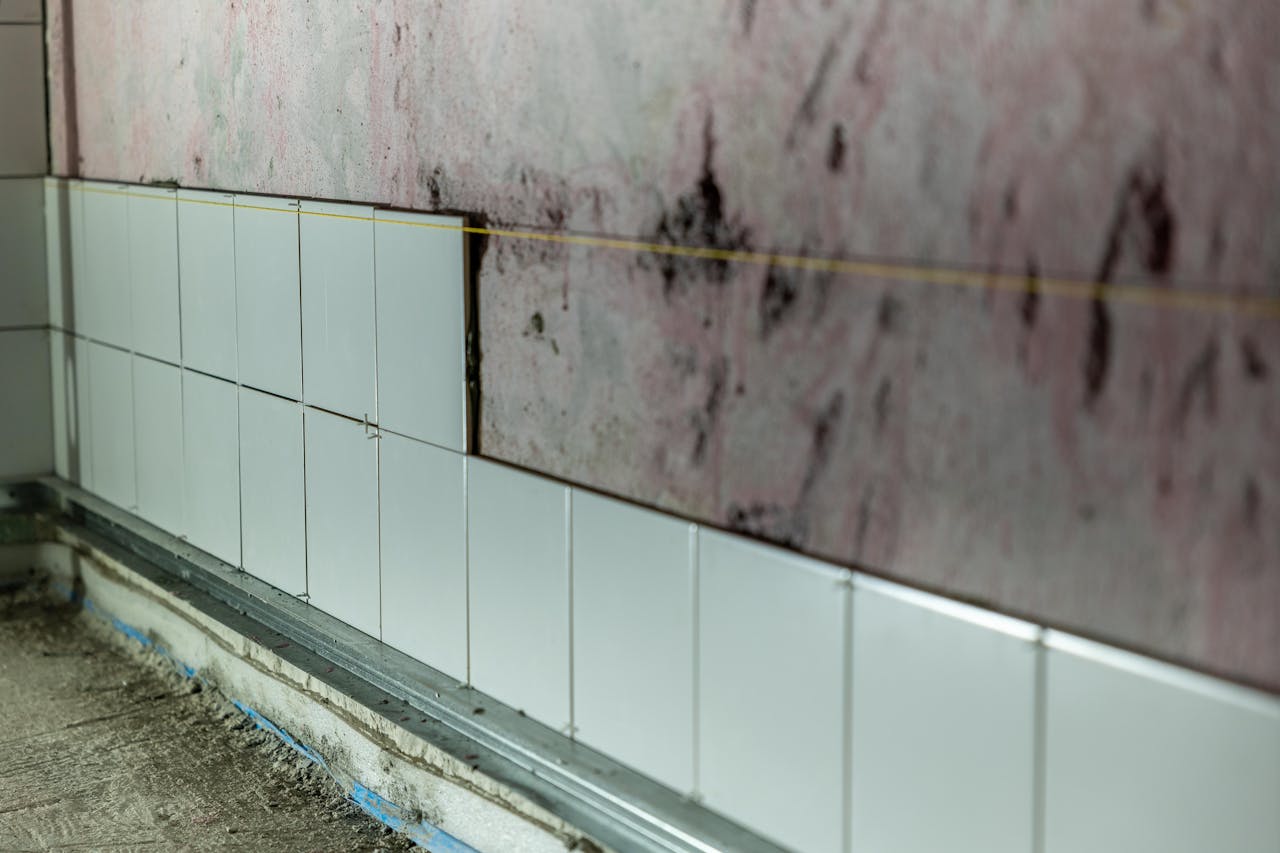When thinking of mold, most picture obvious signs, like black splotches on a shower curtain or green fuzz on old food. But the truth is that mold is far more insidious. Oftentimes the most dangerous and damaging mold growth in a home is completely invisible, thriving quietly behind walls, under floors or in neglected spaces. This hidden mold can degrade your home’s structure, compromise your air quality and impact the health of your family – all without you ever seeing it.
At Above Board, we understand that what you can’t see can still hurt your home. Our expert mold remediation team frequently uncovers significant mold infestations in places homeowners would never even think to look. We believe in empowering homeowners with knowledge, so read on to learn about hidden hotspots for mold and the clues that might indicate its unwelcome presence.
Mold spores are microscopic and ever-present in the air. All they need to activate and begin colonizing is moisture, a food source and a lack of light and airflow. These conditions are often met in concealed areas of your home, especially after a leak, floor or even a prolonged period of high humidity.
Common Hidden Mold Hotspots in Your Home
One of the most frequent culprits is behind walls, under flooring and within ceiling cavities. This is particularly common in areas adjacent to plumbing lines, bathrooms, kitchens or laundry rooms where leaks might go unnoticed for extended periods. Even a slow drip, relatively small, from a pipe can create a damp environment that is a perfect spot for mold to develop. Even if you don’t see it, it doesn’t mean the mold isn’t there.
Your HVAC system and ductwork are other critical areas to consider. If moisture enters your ductwork mold can proliferate within the ducts. Every time your heating or air conditioning runs, it can then circulate mold spores throughout your entire home, leading to widespread indoor air quality problems even if that original contamination point is hidden.
Your attic and crawl spaces could also be hiding mold hotspots. Poor ventilation, roof leaks or inadequate insulation can lead to condensation and moisture buildup in the space. While out of sight, mold here can damage the structural integrity of your roof decking and beams and spores can eventually migrate into your home’s living spaces. If you’ve had rodent problems in the attic, the damage they likely caused can also lead to moisture problems that foster mold.
Finally, your basement is a huge contender for the space with the most hidden mold. Even if you don’t see standing water, damp concrete walls, poor ventilation or minor leaks, it doesn’t mean that you aren’t at risk. Mold can grow on the back of drywall, under carpets or behind stored items. Our basement damp proofing services are designed to combat these underlying moisture issues that lead to hidden basement mold.
Signs That Hidden Mold Might Exist
Since you can’t see the mold, how do you know if it’s affecting your home? Thankfully, there are several clues you can watch out for.
The most prominent indicator of hidden mold is a persistent musty or mildewy odor. This smell often signals active mold growth even if you can’t locate the source. If the smell is stronger in certain rooms or near specific walls, that’s where the mold is most likely to be hiding.
Another sign is unexplained health symptoms. Mold exposure can trigger allergies, asthma flare-ups, skin irritation, headaches, fatigue and general respiratory issues. If you or your family members experience these symptoms more frequently when at home, especially during certain seasons or in specific areas of the home, hidden mold could be the culprit.
Beyond odors and health implications, watch for physical signs that indicate moisture problems, which are precursors to hidden mold. Peeling paint or wallpaper, bubbling drywall, warping wood or unexplained water stains on ceilings or walls can all point to an active or past water intrusion that has likely fostered hidden mold growth.
Finally, visible mold returning quickly after cleaning a small surface area often means there’s a larger, hidden source feeding the visible growth. If you’ve cleaned mold from a bathroom wall and it reappears within weeks (or even days!) it’s a strong sign that the problem extends beyond the surface.
Why Professional Inspection and Remediation are Crucial
If you suspect hidden mold based on any of the above signs, it’s essential to resist the urge to simply paint over it or attempt a DIY removal. Hidden mold often requires specialized equipment to detect and proper containment procedures to remove it without spreading spores further.
At Above Board, our expert mold remediation team doesn’t just clean what’s visible – we conduct thorough inspections to identify the root cause of the moisture and pinpoint all hidden mold hotspots. We use proven methods to safely contain, remove and address the underlying conditions contributing to mold growth, ensuring lasting results and restoring your peace of mind. Whether it’s tackling mold from an undetected leak, addressing damp basement conditions or dealing with contaminated attic insulation after a rodent issue, we provide comprehensive solutions.
Don’t let hidden mold compromise your home and your family’s health. If you notice any of these subtle signs, contact Above Board today for a professional inspection and expert mold remediation. Breathe easier knowing your home is on its way to being truly clean and mold free.

